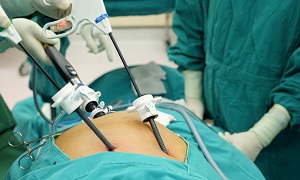Heller Myotomy
Heller myotomy is a surgical procedure which is used for treating the symptoms of achalasia. Achalasia is a procedure that affects the ability of an individual to pass foods and liquids into the stomach. The procedure is a minimally invasive procedure since it uses multiple small incisions instead of a large one. The procedure has a very high success rate, and its effects are also generally permanent. A small number of patients might also require additional treatment.
Purpose
The purpose of this surgical procedure is to treat achalasia, a serious condition which develops when nerve cells of the esophagus are damaged or lose their function. When this condition occurs, muscles of the esophagus, known as the lower esophagus sphincter, are unable to relax fully and let food pass through to the stomach.
Some of the common symptoms of achalasia include indigestion (a burning sensation in the chest area), regurgitation (food or liquid that flows back up into the throat), and dysphagia (difficulty swallowing or feeling as if there is food stuck in the chest or throat).
The goal of Heller myotomy surgery is to release these muscles in order to allow food and liquids to easily transfer from the mouth, through the esophagus, and to the stomach. Since there is no known cure for achalasia, a Heller myotomy surgery can help to relieve the symptoms of the condition.
Preparation
Procedure
The procedure is generally performed under general anesthesia. A small incision is created just above the navel, or belly button. Through this navel, the surgeon is able to insert a thin tube that fills the abdominal area with a harmless carbon dioxide gas so that he/she is able to see the organs better.
Then an instrument known as a laparoscope is inserted into your incision site and through it to the abdomen. The laparoscope allows the surgeon to view the inside of your abdomen on a monitor. Your surgeon makes any additional incisions in the abdomen where the surgeon inserts thin flexible tubes with instruments that are attached to other ends, that are used in order to perform the surgery.
Next, your surgeon carefully cuts and removes a portion of the muscle surrounding the lower part of the esophagus, closest to the stomach. This maintains the esophagus open, and allows any food or drink to pass easily to the stomach.
After the procedure
Generally, in most cases, patients are required to stay in the hospital after the surgery. If there are no immediate complications, patients may return home a day or two after the procedure.
Your healthcare team will evaluate whether a patient can be released by performing a ‘swallowing study’. This test is used to evaluate the integrity of the esophagus after the procedure. If the results of this test are normal, patients can be educated on how to follow a liquid diet before they are sent home. Follow-up appointments are necessary in order to monitor how the operated area is healing and in order to educate the patient on how to transition from a liquid diet to a normal one.
Patients are generally asked to avoid lifting for around two to four weeks so that the incisions in the abdomen can heal. Patients without any serious complications can generally return to work within a week or two after the operation.
Risks
Heller myotomy is a minimally invasive surgery, and therefore the risks associated with it, are quite minimal. Some of the risks include:
- Damage to the internal organs
- Bleeding
- Postoperative infection
In some cases, patients who undergo this procedure might develop gastroesophageal reflux disease in life later.



